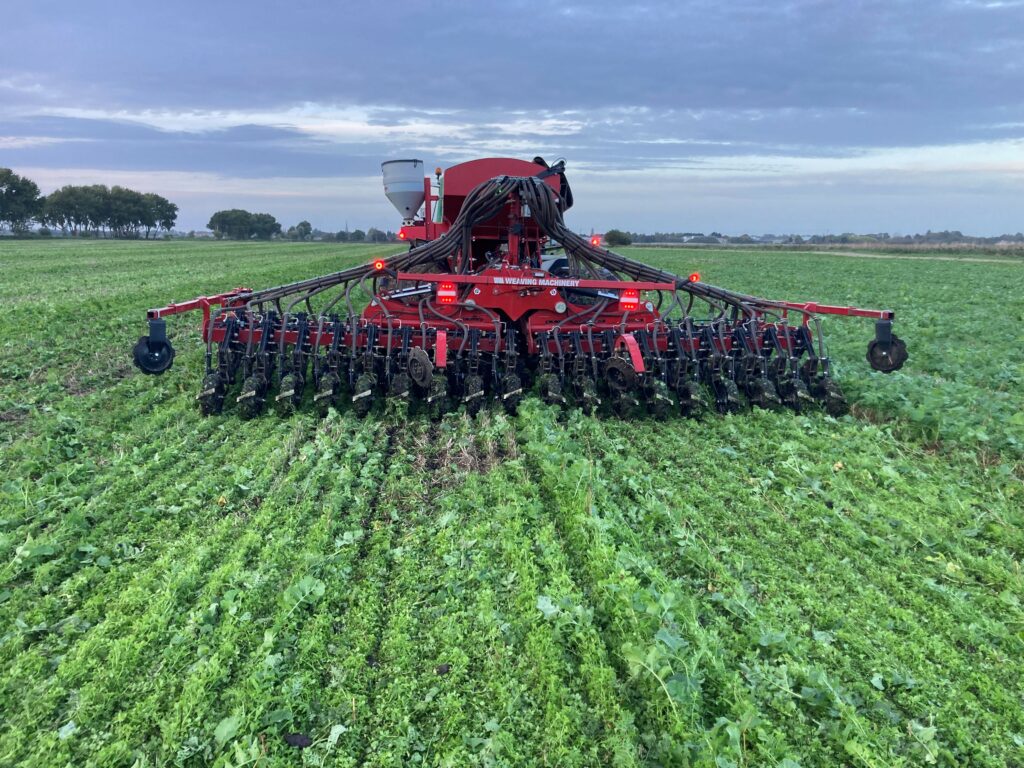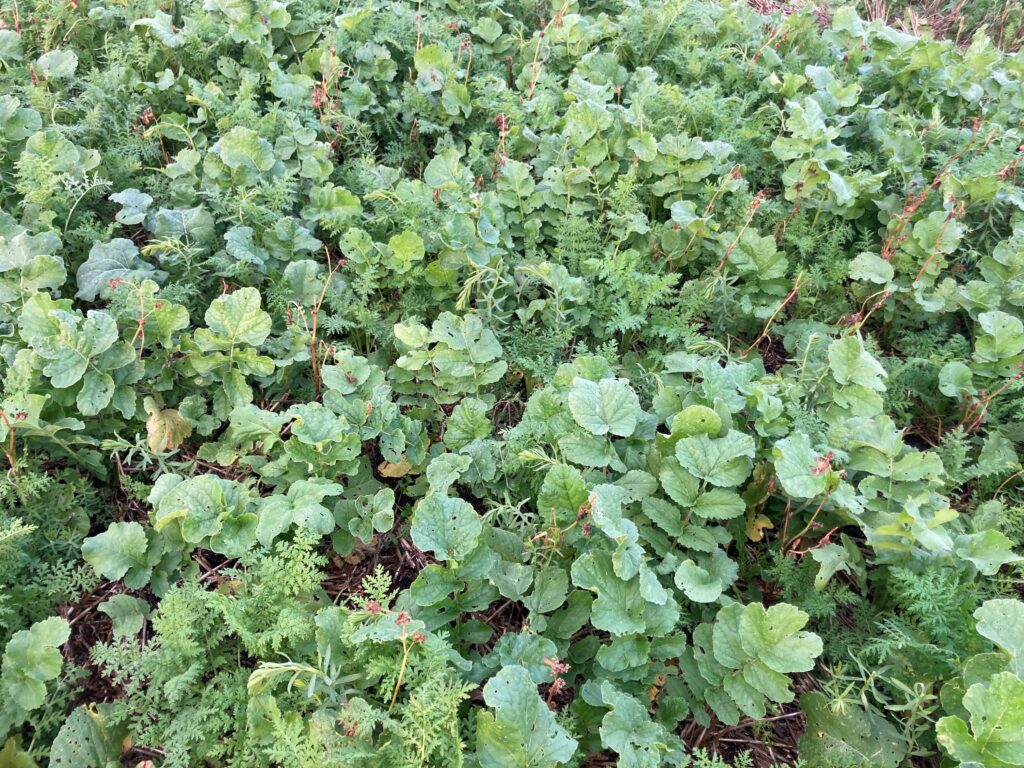Dec 2023
We have had a very busy few months since my last article, with non-farming activities sometimes compromising the day job of farming.
The beans and mustard planted in the spring established well, and we also planted some home-made wild bird seed mix on the old stewardship plots. With a reduction in farmed area last year our Higher-Level Stewardship (HLS) agreement ended in January, but we kept some of the options such as Wild bird Seed plots going until we could start something new.
The mustard suffered from pigeon damage, and a ‘Biblical’ hailstorm, but recovered well. The beans always looked good, but I feel all crops suffered a little from the lower sunshine levels through Summer 2023 compared to the year before.
Harvest 2023 started with our Winter Barley trial plots which were reasonably good, but only a few hectares. We then moved into second wheat Skyfall which yielded well, at 9.2t/ha, but also had superb quality which has been good with milling premiums so strong.

The first wheat Zyatt was slightly better yielding, and the Extase grown mainly as a first wheat was better still, at just over 10t/ha, with good quality, and some has been sold already with a reasonable premium. The beans scraped 4t/ha which is slightly below average, and way below the 6t/ha we had in 2021.
The re drilled mustard was harvested fairly late in the season, but happily yielded 1.3t/ha which for a first-time grower, and a crop that had a huge run of bad luck, was fairly pleasing.
As usual everything was direct drilled, with just some land loosened where necessary with our old paraplow.
We did another low N trial, with some basic missed tramlines in some first wheat Extase following Oilseed Rape. While most of the field had a typical 120kg/ha of Nitrogen, mostly soil applied, the trial areas had just 6kg/ha of Nitrogen applied late as a foliar spray of Methylated Urea around the T3 timing, and reduced fungicides and growth regulators.
The results gave a fractionally lower yield but with slightly higher protein for the low N area. This is not a replicated professional trial, so it needs noting with caution, but it highlights the fact that here on this soil, we can cut Nitrogen rates and other inputs down by a significant amount, and hopefully maintain yield and quality.

We did some machinery upgrades this summer, including upgrading our 26-year-old combine harvester for a slightly larger 11-year-old machine, and our 1999 classic John Deere 6910 tractor was sold and replaced with a larger and newer, but still classic 2008 John Deere 7930 in good order which shares all tractor duties with our existing 16-year-old John Deere 7530. The strategy is to do all our farm operations in house, and quickly to allow time for other projects, but with machinery that is not depreciating where possible.
Our wonderful little 3m Weaving GD drill was traded in for a second hand trailed 6m version that had been reconditioned and updated by Weaving and this increase in output has revolutionised crop establishment in autumn 2023. This was very fortunate given the weeks of wet weather, which did give some challenges, but it was great to quickly cover the land when conditions allowed.
We still have a smaller Sabre tine drill, but the GD is generally our first choice, and I spent some time setting it up with SK Sprayers liquid delivery components, utilising the tank and primary plumbing already on the drill.
This autumn has also seen a slightly refreshed direction for strategy and cropping. With our Landlords deciding not to proceed with the planned new grain store build here, and our Farm Business Tenancy racing towards its end in 5 years, we have taken a view to simplify and reduce our cropping, with a new live Sustainable Farming Incentive (SFI) agreement enabling more ‘Countryside Stewardship’ style options than our old HLS agreement had, and also some whole field options rotationally replacing some of our unreliable break crops such as beans.

This means that we can concentrate on a larger percentage of first wheat crops and some Mustard as cash crops, and have less storage challenges, while also freeing up more time for our other projects. We also find ourselves conscious that our FBT here is due to end soon, and our sons have pursued non farming careers, so we are making plans and provisions for impending retirement.
This is amazing, as it seems like yesterday that we started farming on our own account in 1989 with a David Brown 62 hp tractor, 2 furrow Ransomes reversible plough, MF 30 drill and a MF 525 combine bought for £1500 that did 6 harvests for us. While I look back fondly on those days, life and profitability is so much better for us without a plough!


